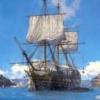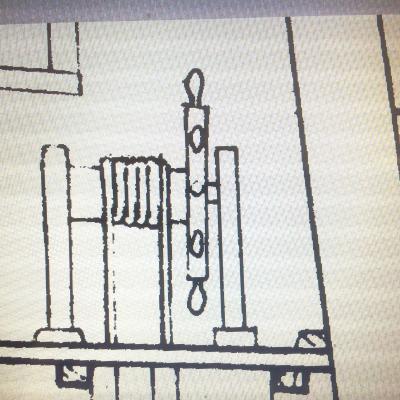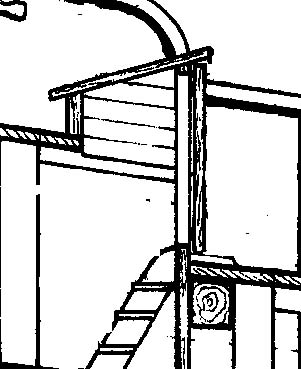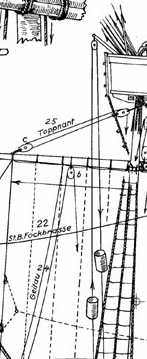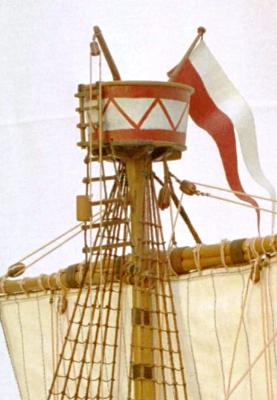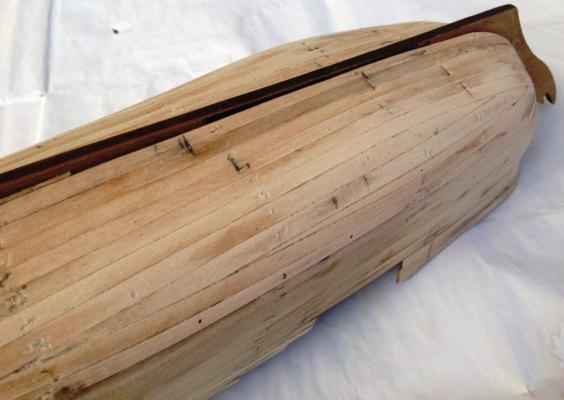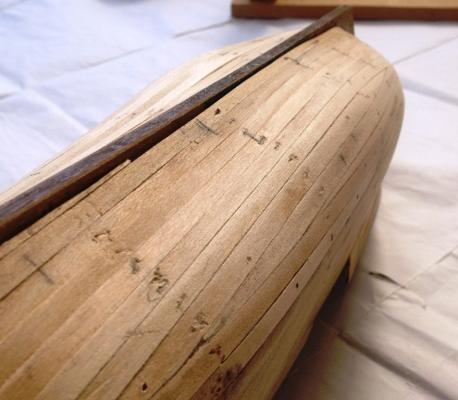-
Posts
513 -
Joined
-
Last visited
Content Type
Profiles
Forums
Gallery
Events
Everything posted by piratepete007
-
JP, all going well so far with your build and looking good. I found with these type of kits that the most critical factor was the diagonal measurements between the top edge corners of the frames before the glue sets - not just between adjacent frames but all over the framework. The laser-cut decks then require far less alteration of those slots. Looking ahead - I found it extremely useful to add in an extra set of bow filler blocks aft of the first frame as well as the supplied block forward of that frame. This then allowed a far better grasp of the bow contour and provided an improved 'seating surface' for the planks as they curved around the bow. I just feel that this minute bit of 'kit bashing' pays dividends. Pete
-
Enough of the words JP ... let's see this French frigate abuilding !!! Its unfair to suggest and not show.
-
Manufacturers of kits often get kicks for this or that and that is the nature of this forum. So it is good to see that people appreciate the service that Euromodel offers as shown by the above comments. Through a combination of servers in Australia and Italy, Euromodel offers a 24-hour Helpdesk and any queries can usually be responded to within 12 hours. That is the way a company should operate. Pete
-
Hi Keith - your incredible work leaves me breathless and I must congratulate you. I keep looking at your posts and whow ! Such finess, such patience, such detail. My contributions that I keep posting on Euromodel were only ever designed to assist people make a start but all that fades into the background. I look forward to seeing the complete ship. Pete
-
Now I might be a little lacking in knowledge in some areas of ship building so I am asking what appears to be a simple question based on the following diagram (poor quality, I know) taken from some ship plans. Viewing the image, forward in the ship is to the right. With the wheel in this position, it seems to me that the helmsman would have to have his back to the bow (?) or was it not uncommon to stand aft of the wheel on one side ? My logic is confusing me so can some sane person explain what is probably a simple answer ? Thanks. Pete
-
Thanks Tadeusz. Pete
-
Looking for some help again ! I am working on the Euromodel Pinco Genovese and there is 'portico' (which I think translates as a 'little verandah') that is a steeply slanted 'roof' offering some protection from the weather with two doors that open outwards enabling people to enter a lower deck via a ladder. The diagram explains it a little better ... but what is the best nautical terminology for this covering ? Appreciate some assistance. Pete
-
What a response - thanks especially to Tadeusz43 and Druxey for those photos and drawings. From an initial outside source that suggested stones to this variety of cylinders, buckets and what look like tied packages, the obvious focus is not on these items (which will vary anyway) but on the system itself of pulleys and ropes. Pete
-
Pulled out the Cocca Anseatica (15th. Century) by Euromodel just to have a look at the drawings. The mast tops intrigued me and I just wanted to share them with you. They had a rope pulley system from the deck and seemed to be a method of sending up weapons and other material to a person occupying the top. Frankly, this is a guess but I hope a logical one. Just so different to the usual tops I have seen. Any comment would be appreciated. Pete
-
What an impressive amount of research. Well done Gunther. However, I have seen all those references before. I must now get back to some actual ship building. Pete
-
Cabrillo - wish there were more like you. A refreshingly positive attitude goes a long way in encouraging others,.. Pete
-
Quite some time ago, Euromodel DID update their introduction to the Ajax. View their website. Pete
-
Keith, Thanks for your great words. The thing I like about the Euromodel RW is that there can never be a prescriptive way of building this ship. That is the beauty of the kit - do your own thing, which is exactly what you are doing. The sad thing is that much time has gone by without adding material to my interpretrive files on the RW. I have been getting many queries for more files on the Friederich Wilhelm, Derfflinger (and a few others) and now the English schooner Lyde is raising its presence. So to all, I have never stopped working on ship-building but just dabbling in a number of different ports. Pete
-
Likewise Brian, I bought the Keith Julier book (Vol. 1) secondhand and devoured what KeithJ said before opening up the kit box and looking at its contents. It was then that I realized I could improve on what KeithJ did (with no disrespect intended) and it was a great starting point for my build. Now we have VinceP and KeithW (and BrianC is also very active on his great RW creation) creating marvelous works of art which just go way beyond what I had time to do (or could do) . Their works show how far you can go beyond what a kit can readily provide ... and then there are the elite builds of the Royal William such as that by Nigel Brooks. Sorry guys if I missed out somebody but there are so many and these names just come to mind. Pete PS Keep these works going shipmates and see how far you can stretch the envelope. Very exciting
-
Keith Julier's book does contain a 'build log' for the Royal William. How many people have actually read his work sentence by sentence - or have they just 'seen' the article ? He was able to cope with the kit as it was and gave minimal criticism and from that point reading his text in detail is worthwhile. Even with the restriction of virtually just using the kit, he still produced - as others have said - a fine model. However, the level of expertise being shown by KeithW is in another totally different realm. KeithW is a fine craftsmen and his work is impressive. Pete
-
Jan, I came across many 'one-liner' references to the Dutch use of calculus in the 17C but the text to look at is Dutch shipbuilding before 1800 : ships and guilds / Richard W. Unger. I believe is the one to peruse. If you can find that one - and read it (either written in German or Dutch but not sure), then please pass on to us any useful bits of information. Pete
-
Finishing the First Planking With the bulwark shape determined, it was time to finish the first planking down to the base of the keel. The only problem here was that the ship needed to be inverted and worked upon without damaging the tall, fragile bulwarks towards the stern. So care had to be taken in designing a support stand. There is nothing startling to report about the technique used for planking this lower section. The set of photos included here are ‘raw’ and not looking ‘pretty’ - the surface will be ‘filled in’ with wood filler and sanded back to produce a uniform surface ready for the second planking shortly. What is worth commenting on though is the profile of the hull section just forward of the Main Mast with the bottom surface being almost flat and quite bulbous, both characteristics together giving a shallow draft for ease of entry into river systems and ports. I have come across such words as ‘pear shaped’ and ‘box like’. These vessels were used commonly in coastal waters and with their minimal armament, they were vulnerable to attack from pirates and other mercenaries. The Dutch are well known to have used mathematics (e.g. integral calculus as early as the 17C) for the development of hull shapes, underwater volumes and hence waterlines for various loads. Now I do not pretend to have the knowledge involved with the designing of hulls but I was just captivated by this particular profile.
-
Thanks for your support Max. The following is just a personal belief ... it is so strange that we bend over backwards to get things as historically correct as we believe they are during the building of a ship ... and then we (myself included) leave the beautiful, beautiful timber with all its glorious texture and colour for all to see. How could it be covered up ? It is at this final stage of building that we dare not add that coat of paint that was indeed used historically. I have just decided to be different with this build. Just a bit of rambling so excuse me as ship-building is all about being individual. Pete
-
Right on target Brian. It is so easy to become orientated on the usual, popular ships of the English and the Americans. The Dutch were massive ship-builders in the 17C producing ships for a number of other countries, so that deserves some recognition. The challenge is in building a different style of ship. Pete
About us
Modelshipworld - Advancing Ship Modeling through Research
SSL Secured
Your security is important for us so this Website is SSL-Secured
NRG Mailing Address
Nautical Research Guild
237 South Lincoln Street
Westmont IL, 60559-1917
Model Ship World ® and the MSW logo are Registered Trademarks, and belong to the Nautical Research Guild (United States Patent and Trademark Office: No. 6,929,264 & No. 6,929,274, registered Dec. 20, 2022)
Helpful Links
About the NRG
If you enjoy building ship models that are historically accurate as well as beautiful, then The Nautical Research Guild (NRG) is just right for you.
The Guild is a non-profit educational organization whose mission is to “Advance Ship Modeling Through Research”. We provide support to our members in their efforts to raise the quality of their model ships.
The Nautical Research Guild has published our world-renowned quarterly magazine, The Nautical Research Journal, since 1955. The pages of the Journal are full of articles by accomplished ship modelers who show you how they create those exquisite details on their models, and by maritime historians who show you the correct details to build. The Journal is available in both print and digital editions. Go to the NRG web site (www.thenrg.org) to download a complimentary digital copy of the Journal. The NRG also publishes plan sets, books and compilations of back issues of the Journal and the former Ships in Scale and Model Ship Builder magazines.


